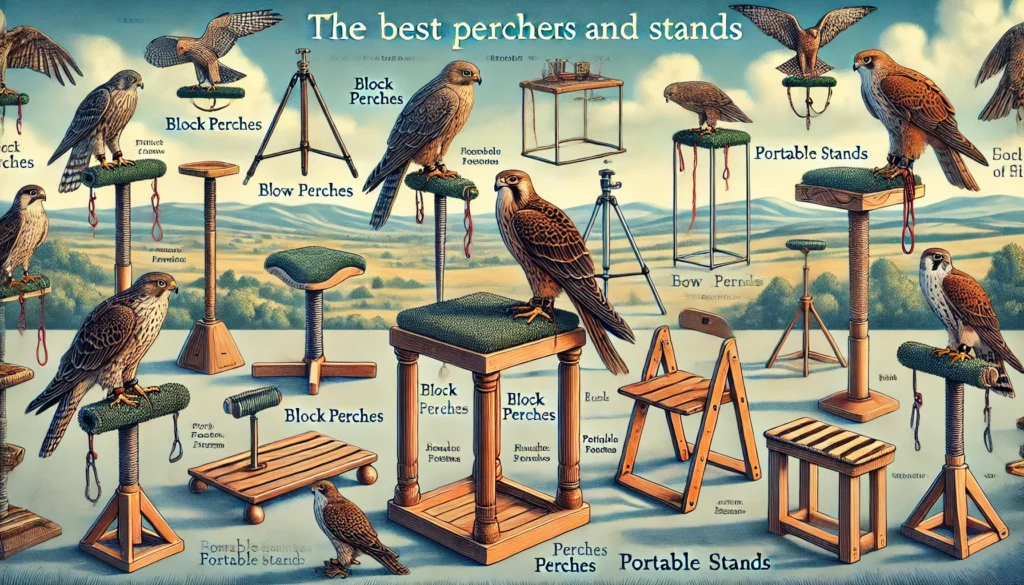Key Modern Falconry Techniques
- Use of Lightweight Trackers: Modern falconers use small GPS trackers to know the bird’s location in real-time.
- Training with Drones: Drones are used to simulate flying prey, helping birds improve their hunting skills.
- Digital Health Monitoring: Innovative technology allows falconers to monitor the health and vital signs of their birds.
- Remote Launch Systems: Machines that release prey remotely make training more efficient and realistic.
- Advanced Equipment Care: High-tech materials are used for bird gear, ensuring safety and comfort.
- Integrated Data Analysis: Data from training sessions is analyzed to tailor individual development programs for each bird.
- Eco-friendly Practices: Sustainable methods are encouraged to protect the environment and wild bird populations.
Discovering Modern Falconry Techniques: An Irish Dance of Tradition and Innovation
Hey there, fellow bird enthusiasts and curious learners! Imagine for a moment you’re in the heart of Ireland, watching a graceful Irish dancer glide effortlessly between traditional and modern steps. Just as these dancers beautifully blend the old with the new, our beloved sport of falconry is doing the same. Here at Learn Falconry, we’e diving into the fascinating world of modern falconry techniques, where centuries-old traditions waltz hand-in-hand with exciting new methods.
Our mission at Learn Falconry is simple: to share the magic of falconry with people all around the globe. In this article, we’ll take you on a lively journey through the latest innovations in falconry, sprinkled with tried-and-true wisdom passed down through generations. Trust us, you’ll want to keep reading to uncover how these techniques can make you a better falconer or simply enrich your understanding of this majestic art.
So, get ready to leap into a world where tradition meets technology, just like that enchanting Irish dance. You’ll find yourself captivated by how modern falconry techniques are enhancing our connection with these incredible birds of prey, ensuring that the dance continues for years to come. Let’s dive in and discover the thrilling steps of this ancient yet ever-evolving sport together!
Exploring Contemporary Falconry: Advanced Techniques and Modern Methods
Falconry, an ancient practice once reserved for royalty, has evolved significantly over the centuries. Today, contemporary falconry blends time-honored traditions with advanced falconry techniques and modern methods. Let’s dive into the fascinating world of modern falconry and discover how current technology and innovative practices are shaping this ancient art.
Understanding Contemporary Falconry
Contemporary falconry isn’t just about tradition; it’s about using the latest advancements to enhance the well-being and performance of these majestic birds. Whether you’re a seasoned falconer or just starting out, itâs crucial to understand the variety of tools and techniques available today. Be sure to check out advanced falconry for beginners to get started on your journey.
Advanced Falconry Techniques
Modern falconers have access to a myriad of advanced techniques to train their birds more effectively:
- Positive Reinforcement: Techniques such as clicker training and systematic conditioning are designed to encourage desired behaviors through rewards, enhancing trust and performance.
- Telemetry and GPS Tracking: The use of GPS trackers allows falconers to monitor their birdsâ location and flight patterns, ensuring their safety and optimizing training sessions.
- Conditioning Programs: Developing advanced conditioning programs tailored to the specific needs of different species of falcons helps in maintaining their physical fitness and health.
Modern Methods in Falconry
Today’s falconers are embracing technology and innovative methods to enhance their practice further:
- Tech-Enhanced Training: Integrating technology such as virtual reality and advanced telemetry to simulate realistic training scenarios without physical risks.
- Urban Falconry: Adapting falconry practices for urban environments, using terraced rooftops and open spaces in cities for training and pest control.
- Ethical Practices: Modern falconry places a strong emphasis on ethical considerations. Practices that prioritize animal welfare and conservation are becoming the standard.
Equipment Innovations
The world of falconry equipment has seen significant innovations, making it more efficient and safe for both falconers and their birds:
- High-Tech Gear: From custom hoods and lightweight jesses to state-of-the-art health monitoring devices, modern equipment is designed to optimize the falcon’s experience.
- Portable Equipment: Tools and accessories like portable perches and compact weighing scales allow falconers to practice their craft in a variety of settings.
The Importance of Ongoing Learning
In the dynamic field of modern falconry, continuous learning and adaptation are key. Resources such as falconry books and connecting with falconry clubs can provide valuable knowledge and community support.
As you dive into the complex world of falconry, remember that the integration of advanced techniques and modern methods can enrich your experience and ensure the well-being of your feathered companions. Explore Learn Falconry for more insightful articles and resources to further your journey in this noble pursuit.
Advancements in Modern Falconry Techniques
Training Methods
In 2024, falconry has significantly evolved by blending traditional methods with advanced technologies. A prime example is the use of GPS tracking and weight monitoring systems during the training of birds of prey. These technologies help in precisely monitoring a bird’s location and physical condition, thereby enhancing its performance and overall health.
Table 1: Benefits of High-Tech Training Methods
| Technology | Benefits |
|---|---|
| GPS Tracking | Real-time location monitoring |
| Weight Monitoring | Improved physical condition management |
Machine Learning in Falconry
Machine learning has also found its way into modern falconry. By analyzing data on bird behaviors and prey patterns, falconers can make more informed decisions about their hunting strategies. Machine learning algorithms identify patterns that humans might miss, optimizing the overall efficiency of the sport.
DNA Forensics
One crucial technological advancement in falconry is the use of DNA forensics. DNA testing helps in identifying and tracking the origin of wild birds, especially in combating illegal trade and poaching. This technology aids law enforcement in protecting endangered species and ensuring the legality of bird ownership.
Techniques and Styles
Modern falconry encompasses a variety of techniques and styles, such as:
- Direct-Pursuit Hawking
- Waiting-On Flights
Each of these styles is tailored to specific environments and prey, demonstrating the adaptability and skill required in falconry. For example, direct-pursuit hawking is typically used in open fields, while waiting-on flights are more suited to larger open spaces where birds can gain altitude to spot prey.
Conservation Efforts
Contemporary falconry is strongly linked to conservation efforts. Falconers participate in initiatives like:
- Reducing Electrocution Threats: Working to reduce electrocution risks for birds in various regions.
- Satellite Telemetry: Using satellite telemetry to track and assess the behaviors of rehabilitated birds released back into the wild.
Table 2: Falconry Conservation Initiatives
| Conservation Effort | Specialty Area |
|---|---|
| Electrocution Reduction | Protecting raptor populations |
| Satellite Telemetry | Assessing released birds |
Global Practice of Falconry
Falconry is thriving worldwide, with active communities in regions like Britain, the United States, Central Asia, and the Persian Gulf states. While considered rare, the sport is experiencing renewed interest thanks to the fusion of traditional and modern techniques.
Research and Data Collection
Falconry organizations support extensive research in conservation biology to ensure the future of wild raptors. Projects such as “Project Goshawk” aim to refine data on goshawk populations and habitats. Such research is essential for the ongoing protection and understanding of these magnificent birds.
By integrating advanced technology and conservation efforts, modern falconry continues to evolve, preserving the sport’s rich heritage while embracing the future.
Final Thoughts on Modern Falconry Techniques
In 2024, falconry has been significantly enhanced through a combination of traditional methods and modern technology. Today, falconers utilize tools like GPS telemetry and advanced tracking systems to monitor their birds with precision. Modern training methods, which blend age-old practices with new technology, have improved the physical condition and overall performance of birds of prey.
Additionally, machine learning is becoming a valuable asset in falconry, helping analyze bird behavior and fine-tune hunting strategies. DNA forensics are used to protect wild raptor populations from illegal trade and poaching, ensuring these magnificent creatures remain a crucial part of our natural world.
Falconers are also actively involved in conservation, using their skills and knowledge to support habitat protection and research initiatives. Programs like “Project Goshawk” aim to safeguard raptor species and their habitats through data collection and habitat preservation efforts.
Overall, the fusion of technology and tradition in modern falconry not only enhances the sport but also plays a vital role in the conservation and protection of raptors, ensuring that future generations can appreciate and share in this ancient practice.



